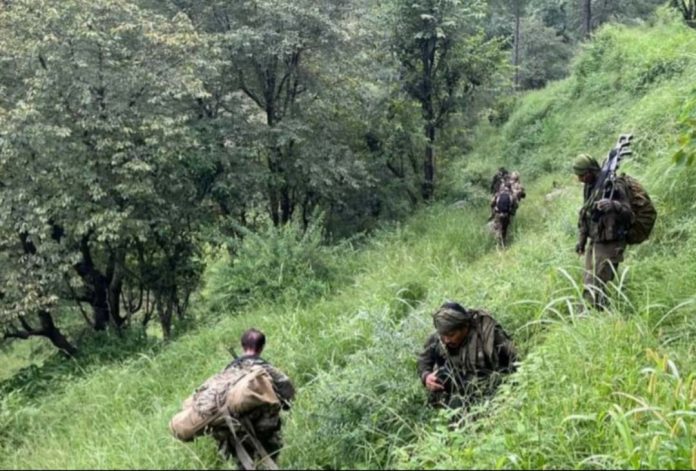While the overall security situation in the Kashmir Valley has shown considerable improvement, the state of affairs in the Pir Panjal area of Rajouri has worsened due to an extraordinary surge in terrorist activities that has resulted in the security forces suffering significant casualties. Though very unfortunate, such reverses while fighting a proxy war are at times inevitable because unlike terrorists who have scant regards for civilian life and property, soldiers are bound by rules of engagement which at times serve as a handicap.
Pakistan Army’s sponsorship of the ongoing proxy war in J&K is no secret. With terrorist activity in Kashmir Valley on the wane due to concerted actions by the security forces and law enforcement agencies, the Pakistan Army’s notorious spy agency Inter Services Intelligence [ISI] has directed its proxies to shift their terrorist activities to south of the Pir Panjal mountain range. The terrain here being mountainous and densely forested, provides terrorists an excellent scope of carrying out hit and run attacks.
The Indian army has been quick in taking stock of the prevailing situation in the Rajouri sector with due diligence and utmost seriousness. What’s praiseworthy is that instead of resorting to knee-jerk reactions, it is carrying out a comprehensive analysis of the prevailing situation at various levels, and by involving all stakeholders ensuring optimal synergy between the army, central/UT police forces as well as intelligence agencies.
An exhaustive brainstorming session to address the terrorist threat in the Pir Panjal area as well as the hinterland has also been carried out within the army in which officers of Counter Insurgency Force [Rajouri and Doda] and Ace of Spades Division participated. During this session, besides a thorough review of the prevailing operational dynamics, ways to make anti-terrorist operations in Rajouri, Poonch and Reasi sectors more effective were also discussed threadbare.
Following his Line of Control [LoC] visit in the Rajouri sector alongwith Nagrota based White Knights Corps Commander Lt Gen Navin Sachdeva to review the ground situation, General officer Commanding-in-Chief of Udhampur based Northern Command Lt Gen Upendra Dwivedi chaired a high level security review conference. Attended by DGP JKP RR Swain, ADG Law & Order Vijay Kumar, ADG Jammu Division Anand Jain and IG CRPF Sanjeev Khirwar, the forum discussed plans to destroy the terrorist ecosystem.
It’s been learnt that having obtained essential inputs and suggestions from the environment, Headquarters Northern Command has drawn up a holistic plan to clear the Rajouri sector of terrorists. Referred to as ‘Strat 24’, it envisages use of kinetic means to neutralise terrorists as well as conducting meaningful civic action programmes to win over hearts and minds of the civil population.
The Poonch-Rajouri sector has been a hotbed of terrorist activities in the past but the Indian security forces ably supported by law enforcement agencies had successfully uprooted terrorism from this area. So, the current situation should not be a reason for alarm as the Indian army has both the capability and determination to once again clear this area of terrorists.
Non-initiation of large scale operations against terrorists in the Rajouri belt may have upset some, but what needs to be understood is that the current situation calls for patience and caution. It needs to be understood that absence of anti-terrorist operations doesn’t mean that the security forces are either complacent or on the back foot. On the contrary, periods of what appears to be inactivity on the part of security forces is often an indication that something big is afoot.
For obvious reasons, the precise contours of the action plan conceived by Northern Command have not been disclosed. Yet, with Lt Gen Dwivedi focusing on seamless synergy in operations, joint combat readiness, strengthening the counter terrorism grid and ensuring soldier-citizen connect, it’s apparent that ‘Strat 24’ will definitely turn the tables on the Pakistan Army’s proxies holed up in the Pir Panjal ranges and hinterland.

